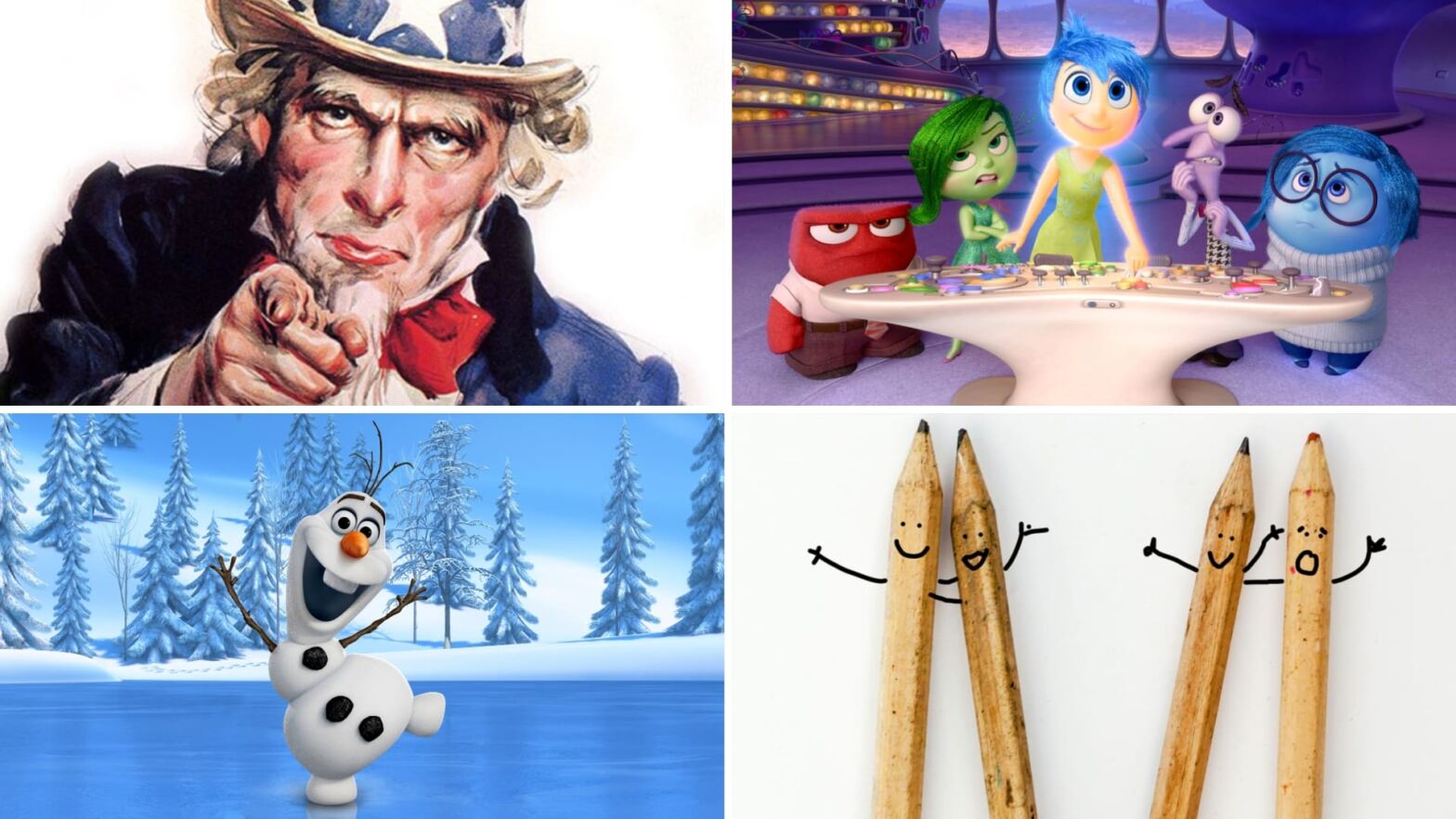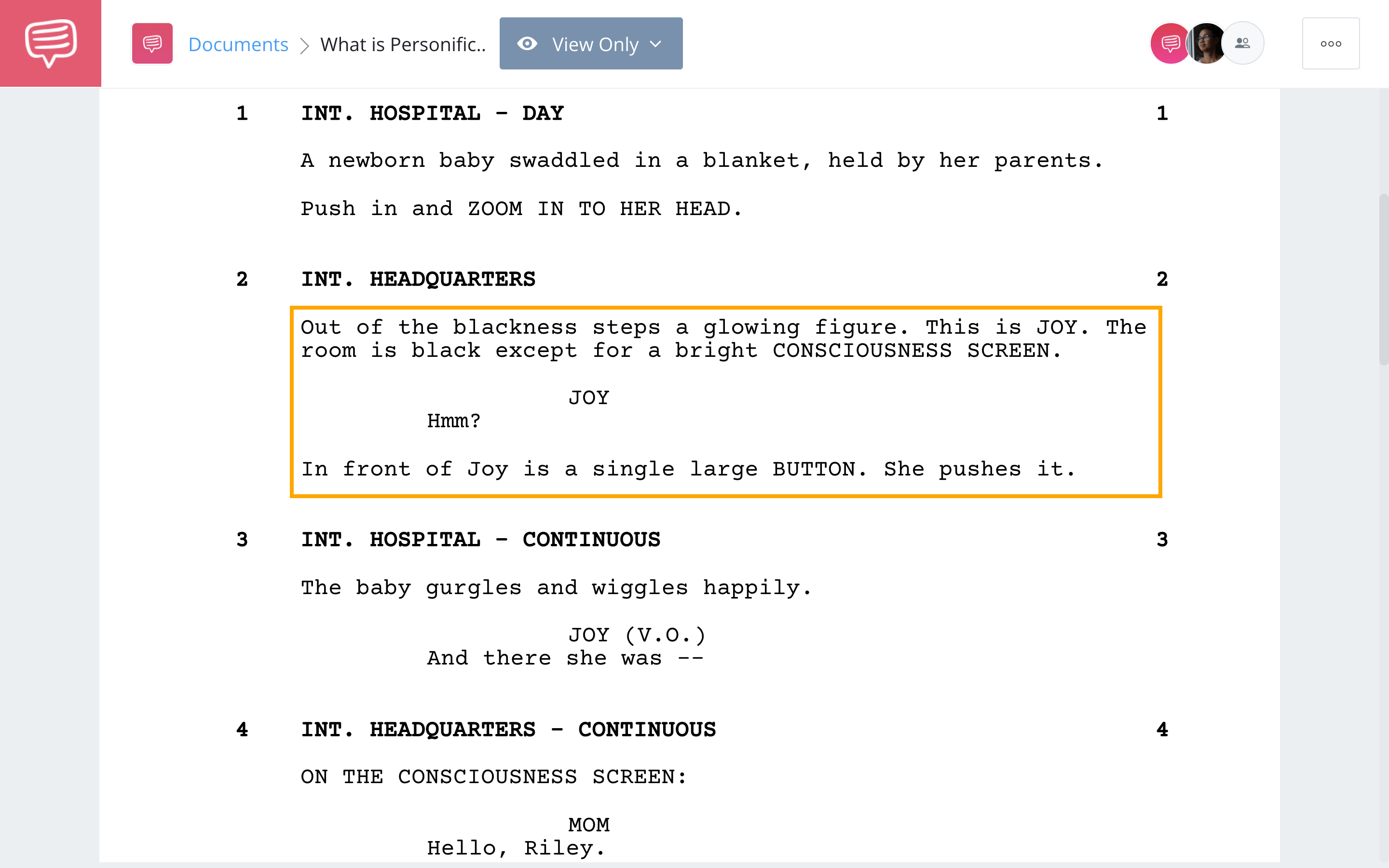Have you ever read a story or novel where the words jumped off the page? It could have been due to personification. In fact, that first line you just read was an example of personification. Personification is an incredibly useful literary device that is used in sophisticated literature as well as everyday language. In this article, we’ll give personification a simple definition and why writers and filmmakers use it in their work. Let’s dive in.
What is Personification?
Personification definition
Personification can be used for countless subjects and literary forms from poetry to screenwriting. But all personification falls under the same definition. More than just a clever way to bring inanimate objects to life, this writing technique can enrich description and imbue emotions in unexpected ways.
Before we analyze some personification examples and benefits, let’s establish a personification definition.
PERSONIFICATION DEFINITION
What is personification?
Personification is a literary device that gives human characteristics to nonhuman things or inanimate objects. The nonhuman things can be animals, objects, or even a concept. The human characteristics given to these things can be emotions, behaviors, or actions that bring nonhuman things to life. Personification is common throughout literature and everyday speech. It can add life, energy, and animation to otherwise lifeless objects or subjects.
What is personification used for?
- Explain concepts more directly
- Energize the text
- Set the scene
What is an example of personification
Personification examples
Before we dive a bit deeper into its function it may be a little more helpful to look at a few personification examples. Personification is used throughout literature, movies, and everyday vernacular. Some examples of it are phrases:
- “The sun smiled down on us.”
- ‘The story jumped off the page.”
- “The light danced on the surface of the water.”
Maybe you’ve heard the phrase, "The wind howled in the night.” Howling is a verb used to describe the vocal projection of an animal or person. However, obviously, since wind is not alive, "howls" is a way to personify it and give the scenario an entirely new dimension and meaning.
What’s personification?
What is personification used for?
Personification is unique among literary devices in that it is a non-literal use of language that conveys thoughts and ideas. Why would a writer use language in a non-literal way? First, let’s get a clearer understanding of what this literary device is by watching this video breakdown by The Bazillions.
What is Personification by The Bazillions
Although the explanation in the video may be a bit rudimentary, the video animation itself demonstrates the benefits of personifying an inanimate object. It made the video more lively, relatable, energetic, and fun. Let's run through some reasons why writers use this writing technique.
1. Explain concepts more directly
By bringing to life nonhuman subjects or inanimate objects, concepts and ideas can be described more directly and more simply. Take, for example, the classic “birds and the bees” conversation.
Personifying birds and bees simplifies the concept in a way that is easier to tell. It is also both personification and a metaphor.
2. Energize the text
In poetry and literature, personifying can energize the text by literally bringing to life rather dull subjects. Allowing trees, or animals, or even objects to interact with characters can engage a reader much more than if they were portrayed realistically.
3. Set the scene
Personifying various story elements can create the world and set the scene of a story. Personifying objects can make the world of a story appear lively or more menacing depending on how the personification is used. For example a house can be personified to move and be haunted in a horror story.
Let’s take a look at a few examples of this literary device in literature to better understand why and how writers use it to enhance their writing.
Related Posts
What is personification used for?
Personification in literature
Personification can be found throughout the history of literature. It evokes readers to use their imagination and its use can create depth and emotion to a story. To recap, take a look at this video that provides a personification literary definition and analyzes the function of it in literature.
What is Personification? • A Literary Guide
Personifying can be an incredibly useful device when it comes to literature. Take, for example, the writing of iconic author John Steinbeck. In his short story “Flight,” Steinbeck writes:
“Five-fingered ferns hung over the water and dropped spray from their fingertips.”
Personifying the ferns is given the human characteristic of hands. What is actually being described is water falling off of a fern. In doing so, Steinbeck brought what would have been a rather dull scene to life.
What’s personification used for?
Personification examples in film
A majority of animated films could not exist without the idea of personification. The animation of animals and objects to be human and lifelike are what make animation so engaging and unique.
In this scene from Beauty and the Beast it is revealed how integral the literary device was to the entire story. The life and human characteristics of inanimate objects are revealed to have come from the actual people they turn back into.
Beauty and the Beast (1991) • Personification examples
Film is unique because it doesn't only use personification to relate better to an audience or more simply explain an idea. In film, it has allowed filmmakers to literally make characters out of nonhuman subjects. Where would Mulan be without Mushu? Or Frozen without Olaf?
Being able to personify these characters has and continues to open the doors for memorable characters on the big screen.
Some of the best personification examples in film can be found throughout Inside Out, one of Pixar’s best films. The entire film’s story revolves around personifying emotions.
In the first three pages of the Inside Out screenplay, screenwriters Pete Docter, Meg LeFauve, and Josh Cooley utilize personification to bring their emotional characters to life. We brought the script into StudioBinder’s screenwriting app to analyze this use of personification.
Personification examples in Inside Out
Not only does personification allow the audience to see these concepts like joy, sadness, and fear as a character, but it gives them a voice and the ability to take action thus creating a narrative.
Personification is an incredibly useful tool that opens up new possibilities for characters and therefore stories that can be told. Understanding how and when it can be used will not only make you a better writer and storyteller.
Related Posts
UP NEXT
How Writers Use Metaphor
Personification is a great tool at relating and engaging an audience. Another literary device that can capture a reader’s attention is the metaphor. In our next article we define what a metaphor is as well as dive into some metaphor examples to better understand how they can elevate a story.

